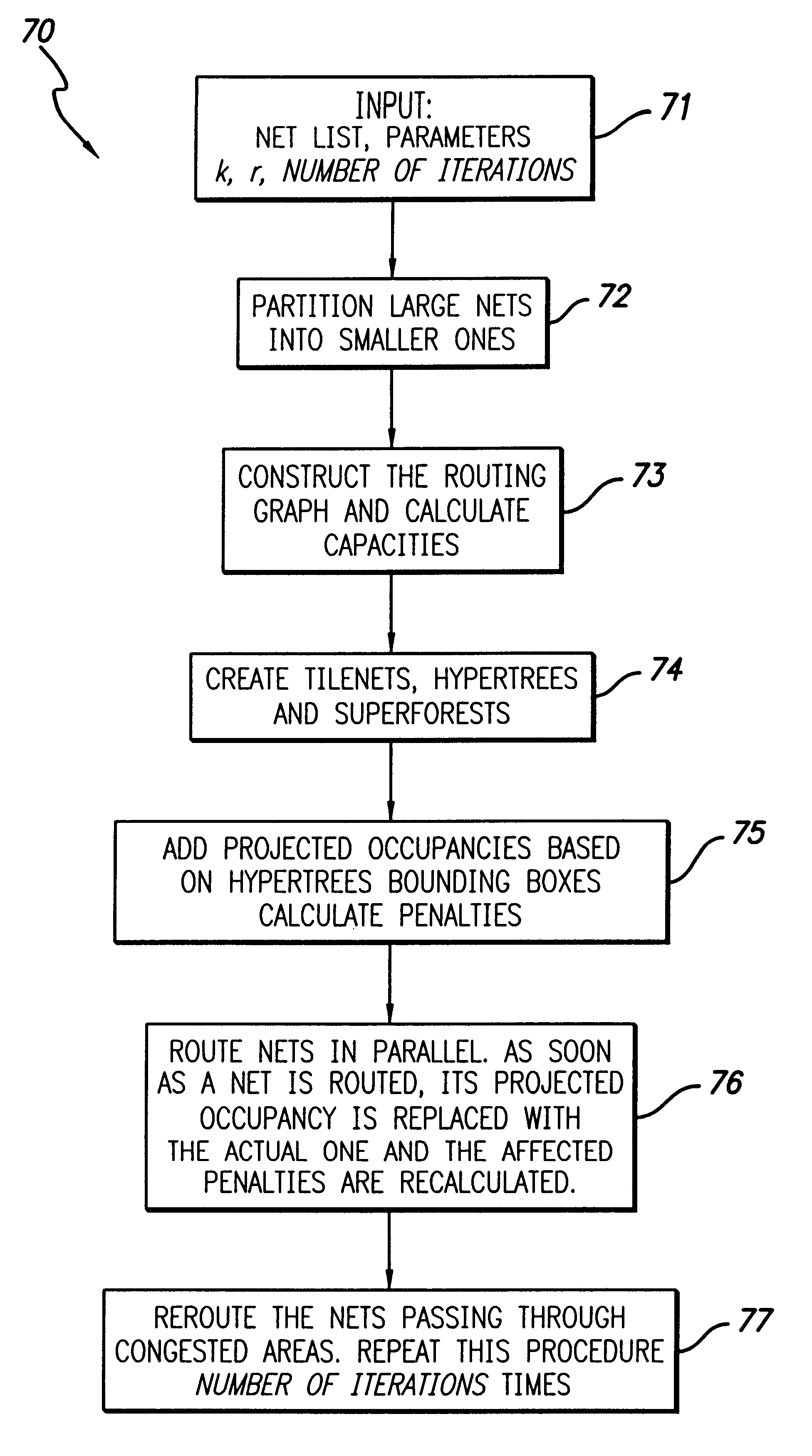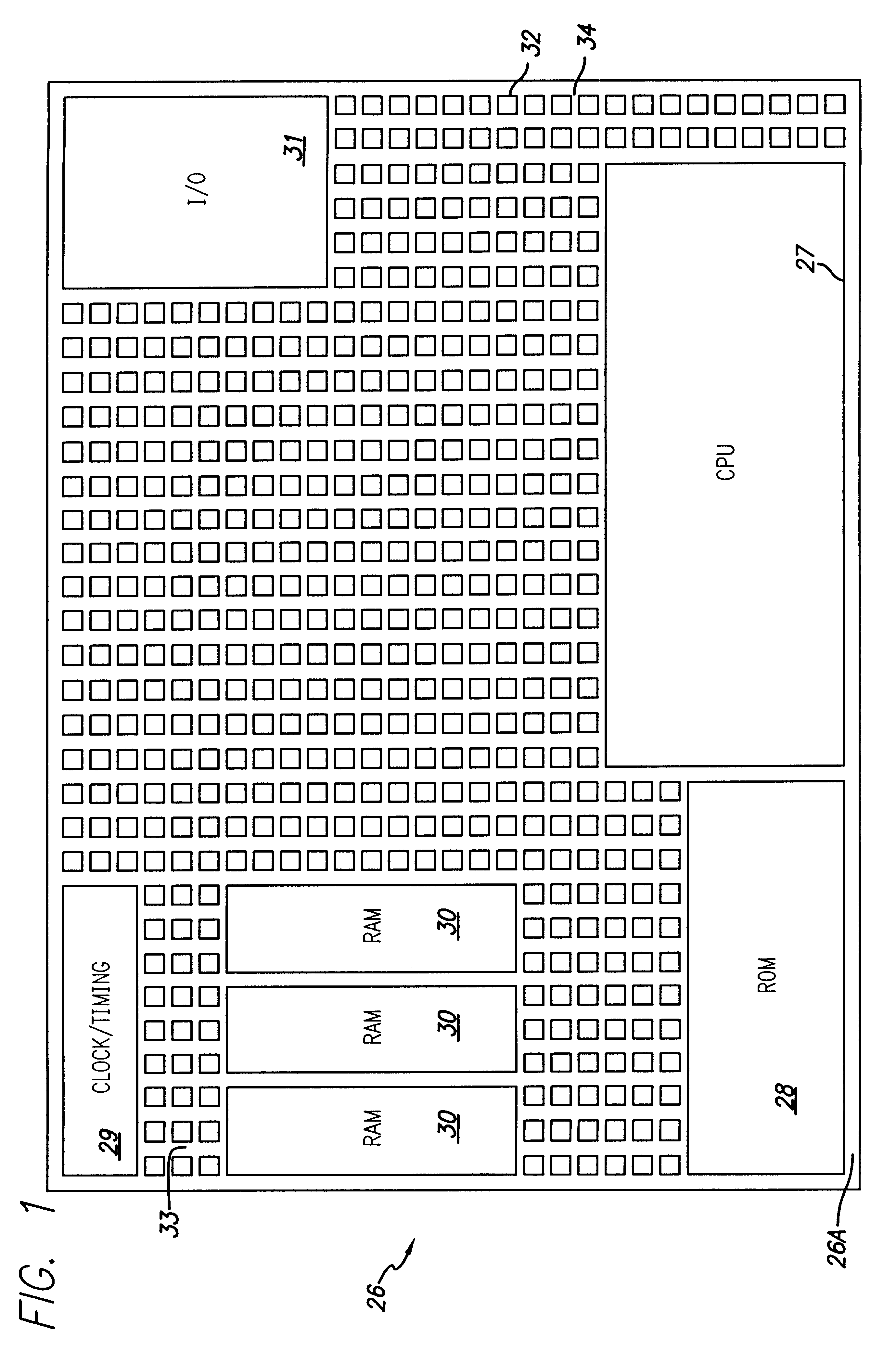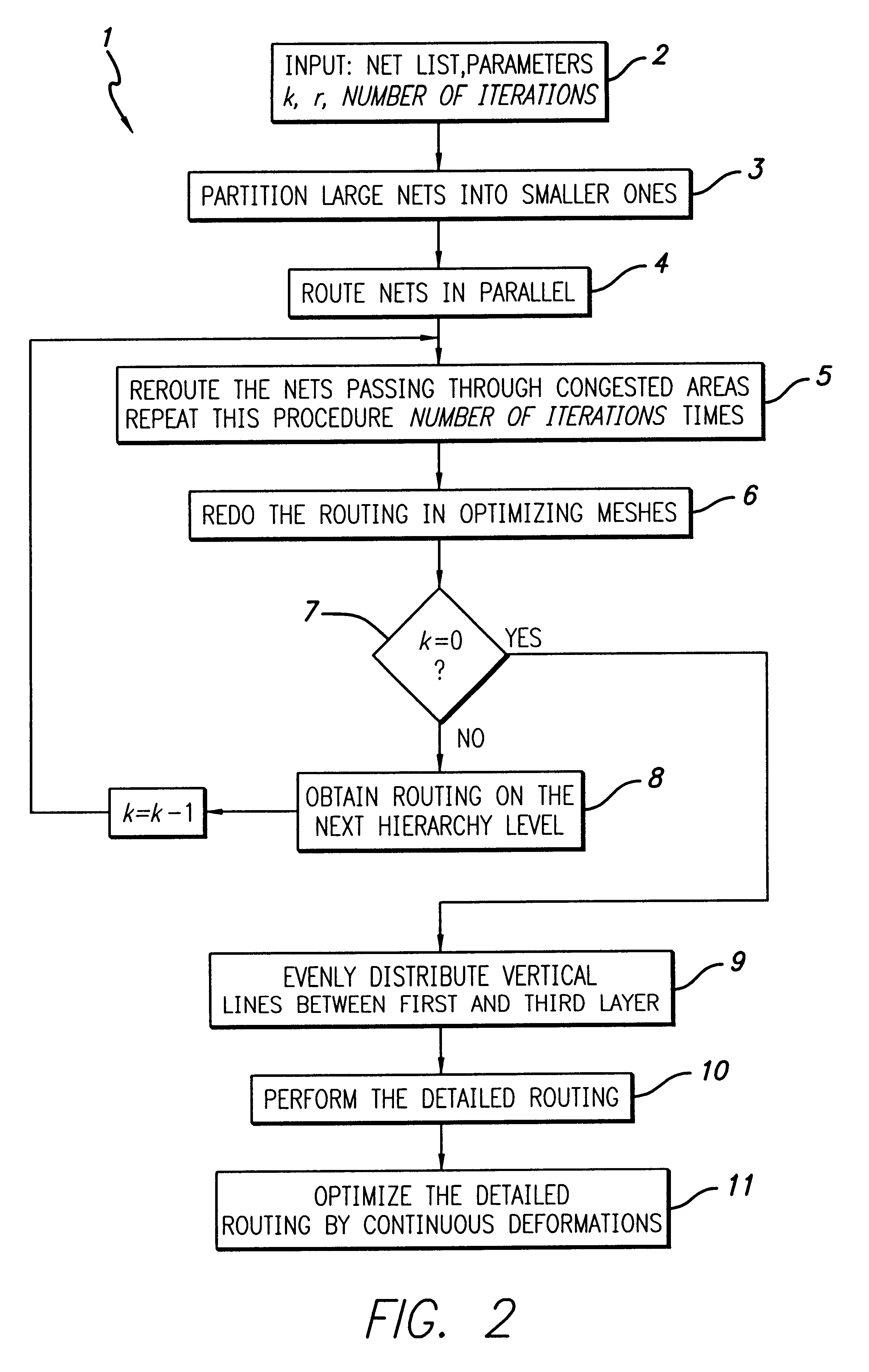Method and apparatus for hierarchical global routing descend
a global routing and hierarchical technology, applied in the field of microelectronic integrated circuits, can solve the problems of inability to handle the layout of the entire circuit, physical design is not practical without the aid of computers,
- Summary
- Abstract
- Description
- Claims
- Application Information
AI Technical Summary
Problems solved by technology
Method used
Image
Examples
Embodiment Construction
I. METHOD AND APPARATUS FOR PARALLEL SIMULTANEOUS GLOBAL AND DETAILED ROUTING
Described in this Section I ("Method and Apparatus for Parallel Simultaneous Global and Detailed Routing") is a system for routing an integrated circuit in parallel. The system takes into account congestion and routes nets so as to avoid congested areas. The system also minimizes process defects by spreading wires as evenly as is possible. This routing system utilizes several steps as are shown in FIG. 2. FIG. 2 is a flow chart 1 that shows the basic steps of the routing system.
As an initializing step 2, certain information must be input into the system, including the netlist and certain specified parameters. The parameters include k, r, number of iterations, each of which is discussed more fully below. Additional parameters may also be input at this point of the operations. Such additional parameters include the parameter D (described more fully below in Section II), the parameter K (described more fully b...
PUM
 Login to View More
Login to View More Abstract
Description
Claims
Application Information
 Login to View More
Login to View More - Generate Ideas
- Intellectual Property
- Life Sciences
- Materials
- Tech Scout
- Unparalleled Data Quality
- Higher Quality Content
- 60% Fewer Hallucinations
Browse by: Latest US Patents, China's latest patents, Technical Efficacy Thesaurus, Application Domain, Technology Topic, Popular Technical Reports.
© 2025 PatSnap. All rights reserved.Legal|Privacy policy|Modern Slavery Act Transparency Statement|Sitemap|About US| Contact US: help@patsnap.com



